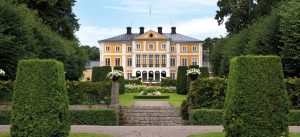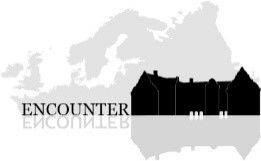The programme for the 6th ENCOUNTER Conference is due shortly. The conference takes place at Julita Manor in Sweden 1-4 June 2022. More information will follow. See call for papers below
The 6th ENCOUNTER Conference
The Country House and Modernity
Julita manor, Sweden, 1–4 June 2022
The role of the manors and estates changed throughout Europe when states with strong feudal roots were transformed into modern welfare states, particularly in the last two hundred years. The period has been characterised by liberal legislation, land reforms, reduced incomes in agriculture, the retreat of the landowning elite, strong industrialization and urbanization, as well as major political upheavals. In Western Europe, marked by a democratic breakthrough, the mansions went from being the private powerhouse of the elite to beginning to be perceived as a common cultural heritage with high aesthetic values, which could be put in the service of popular education. In Eastern Europe’s totalitarian states, land reforms were instead carried out with the dissolution of the estates, which once and for all broke the old nobility’s position of power.
The 2022 ENCOUNTER conference aims to bring historians and museum employees together to explore the manor’s role in transforming modern society.
We welcome papers in the following areas
1. Estates and the social contract
In the transition from a feudal to a modern, democratic society, new social contracts were established between rulers, the landed elite, the urban class, farmers, and the working class. Researchers are still conflicted about the extent that the manor-owning noble elite actually succeeded in staying in power, transformed irretrievably or was replaced by an urban elite, and eventually even farmers.
What kind of strategies were developed in the noble families to keep their political and economic influence? How did they cope with the liberalization of legislation, such as land reforms, inheritance reforms, the abolition of entailment, and tax reforms?
2. Economy and management, income, and ownership
Country houses cannot be separated from the financial resources necessary for their upkeep. While the initial building process is certainly expensive, this layout is easily exceeded by the costs of regular maintenance work over decades and centuries. Some strategies for financing the necessary maintenance involve the use of the country house itself to generate income. Thus, the usage of buildings as spa resorts, tourist attractions, museums or hotels is found.
How have such strategies for financing country houses transformed them? And which follow-up costs have such transformations created? Can we see an increased focus on commercialization only over the recent decades?
3. Embedment and Detachment: Country houses in their landscapes – change, management, future
Country houses are embedded in their surrounding landscapes, both socially and geographically. However, the relationship between the country house and village inhabitants, as well as the surrounding environment has changed fundamentally over time and will most likely continue to do so in the future.
Since country houses were always part of a local community, one can explore social relations within and surrounding the country houses. Who inhabits the space in and around country houses and in what ways were and are these lives interconnected? Which spatial and social practices were and are influential in transforming country houses and country house societies?
4. Stability and Change: The creation and re-creation of country houses as homes
Country houses invoke ideas of stability and durability. Their substantial structures, however, vastly hide the fact that over the centuries, owners and inhabitants adapted and changed both buildings and interiors according to their needs, tastes, and purposes. Focusing on country houses as sites of consumption, thus, allows one to highlight change in place of stability.
The resulting narratives of change and stability raise questions for the past, present, and future. How and when did refurbishments of country houses take place? Are there certain periods of contracted investment, or hiatuses, with a return to consumption? When, if ever, did inhabitants and/or owners start to appreciate their country houses as historical artefacts rather than as homes?
5. Country Houses as national heritage and museums
This session will cover the rising interest in country houses in the 20th century and the willingness to preserve historic houses and landscapes for the future as part of national and cultural heritage. What considerations, policies, and strategies have shaped what was considered worth saving, and what features and narratives were rejected? What is communicated in a country house museum and what kinds of stories are told? How do today’s museological and educational concepts relate to the original ideas and future visions?
What architectural and museological practices were influential in transforming country houses into museums? How were the built heritage and the domestic environments interpreted and how do these ideas impact country house museums today? How will the requirements for commercial success and new marketing strategies affect the different aspects of a country house museum both currently and in the future? In which ways can different historical sources and collections be used to unveil stories that have not yet been told? The conference will also discuss the role of public authorities, curators, and other professionals dealing with country houses, particularly how curatorial work combined with museum policies have determined the shaping and re-shaping of country houses and their surrounding landscapes.
Download call for papers as pdf. CFP2021 draft
Papers on any aspects of the above mentioned topics will be considered. Abstracts of no more than 400 words should be sent to Matilda.Fredriksson@nordiskamuseet.se
before 21 January 2022.

